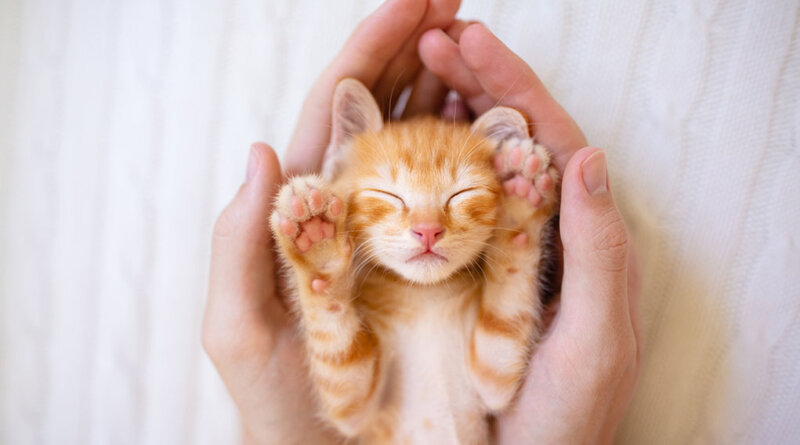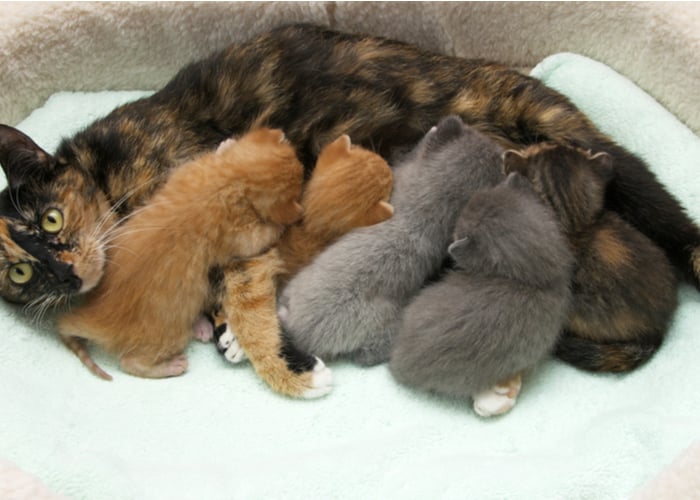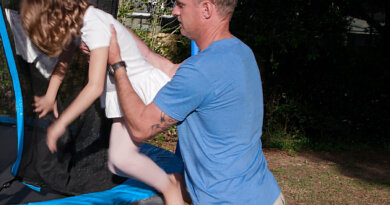Kitten’s Development in the First Six Weeks – Top Dog Tips
Like humans, a kitten’s development will make many leaps and bounds during the first six weeks of life.
This time period will help shape their overall personality, characteristics, and wellbeing.
It is often considered to be the most crucial time frame for the health of your new kitten. Kittens will grow at a remarkable rate during the first six weeks of life, often never accomplishing this growth rate again in their life.
Seeing their chances throughout the week is a powerful reminder that tiny bodies can achieve great things.
 A Word of Caution in a Kitten’s Development
A Word of Caution in a Kitten’s Development
When a kitten is young, it can be susceptible to many serious threats.
Things like upper respiratory infections and fleas can severely impact kitten development, especially if combined with other health problems.
These can cause a condition known as fading kitten syndrome (FKS), a severe and fatal condition. Fading kitten syndrome is more often found with feral and stray litters.
So segregating them into a different area (away from other animals) is crucial.
To help you understand the growth and development your kitten makes each week, here’s a detailed timeline:
 Your Kitten’s Development in Week One
Your Kitten’s Development in Week One
A newborn kitten is born blind and deaf, with their eyes closed and their ears folded.
Around day five, the kitten will begin opening their eyes, and almost all kittens will have a blue color. Likewise, the kitten’s ears will start to unfold, allowing them to hear sounds too.
All kittens are also born without teeth. The kittens are entirely reliant on their mother during this stage. If your kitten doesn’t have a mother, you’ll be expected to monitor with 24/7 care.
This care includes a unique kitten formula every two hours, designed to strengthen the immune system and ensure proper bone growth.
It is common for the kitten to concentrate on feeding and to grow during this time. As a result, it is expected that the kitten will double in weight by the end of this week.
Your Kitten’s Development in Week Two
During the second week of development, your kitten will likely practice their vocal skills with the first squeaky mewing sounds heard.
Likewise, they’re trying to understand how walking, wobbling, and moving works. They’ll make their first attempts to stand up but remain close to their mom and other littermates. I
t’s during this week that the first of their 26 teeth will begin to come in.
The kittens are still entirely dependant on their mother and nurse regularly. The kitten’s eyes will start to open more frequently during this time, but their vision will be quite blurred.
It’s important to note that your kitten’s eyes don’t dilate or contract at this time, making them vulnerable to bright lights or direct sunlight.
Their hearing will continue to improve, although it will remain a bit muffled.
Your kitten will continue to grow at a breakneck pace, averaging 10 grams per day. Their sense of smell is starting to develop, and they continue to understand the world around them.
Kittens will hiss at unfamiliar sounds (although they are generally soft and broken sounds). Some experienced owners can identify the sex of the kittens at this time, although it’s not uncommon to get the gender wrong.
Your Kitten’s Development in Week Three
The third week of development is a week of milestones. Your kitten now has properly developed ear canals, giving them a full range of hearing.
The eyesight is now fully developed as well, although their vision is slightly blurry at this time. Your kitten can also voluntarily eliminate (both urine and feces) as the digestive system develops.
The kittens are still nutritionally dependent on their mother but are ready to start eating other foods.
It’s essential to get them used to human touch, particularly if you’re trying to rehome the kitten down the road.
Until now, your kitten has only had direct contact with their mother. To start, desensitize the kitten using a very soft toothbrush against the kitten’s fur. This feeling replicates a mother’s tongue but gets the kitten used to human scent and interaction.
Again, it’s important to use the brush lightly against the fur while applying equal and slow pressure.
Your Kitten’s Development in Week Four
At this age, your kitten is no longer considered to be a neonatal. Instead, they physically resemble miniature, baby versions of a full-grown cat with fluffy fur.
Their depth perception has now developed, and they manage to walk without stumbling. Their teeth are now visible, and they can use them to start eating soft wet food.
Your kitten is still dependent on the mother for nutrition; it’s important to offer her the same kitten formula food.
This will help ensure she has the strength and energy to feed a litter of kittens too. Any mealtimes should be done near mom, encouraging them to stay close to mom but slowly build independence.
While they are eating, gently stroke their back as positive reinforcement.
Your kitten will start to explore their surroundings, with human interaction playing an essential part in their development.
It’s vital to use playtime as a way to build confidence around people, but make sure to give them plenty of space too. Your kitten will likely interact with the littermates more regularly, forming alliances among them.
These alliances may or may not be based on gender.
The kittens can begin using a low-profile litter box but will need help getting in and out of the box.
They will instinctively know what to do in the box. Should your kitten require it, you can clean it with a warm, damp paper towel.
Your Kitten’s Development in Week Five
By five weeks of development, your kitten will graduate on to new experiences. They can eat canned kitten food, starting with small amounts and building from there.
The kittens will adapt to eating what their mom eats, ensuring that you find high-quality food for them both to eat.
When choosing a food, opt for a food with a meat source named as the first ingredient.
Kittens at this age are likely to explore their environment with their mouths, precisely the way a baby will experiment.
Therefore, it’s important to check their space for potentially dangerous and toxic items and remove them promptly. Things like wires, plants, and other loose items look like interesting play toys but may have harmful consequences.
Your kitten will continue to explore their environment and enjoys playing with their littermates. Always supervise your kittens when they are active and exploring to prevent any injuries.
Your kitten will also continue their litterbox training at this time. They will need a smaller, separate litterbox than their mom.
Ensure the litterbox is easy to enter and exit for little legs, and limit litter amounts to one or two inches of litter.
Your Kitten’s Development in Week Six
Physically your kitten has fully developed and focused eyes that will help guide them on their explorations.
They enjoy adventures and will explore short distances away from their pack. Many enjoy practicing their play and social skills with their littermates and mother at this time. Their baby teeth are now coming in.
Just as human babies appreciate a teething toy, so do kittens.
This stage of development is often the most entertaining for their human observers, with pouncing, leaping, running, and entertaining themselves.
They play hard with their littermates and enjoy spending time interacting with their toys too. Exploring is hard work, making them fall asleep effortlessly.
If they happen to crash, let them rest – growing up is hard work.
It’s essential to observe the mother cat’s interaction and socialization with humans, as kittens are likely to follow her lead. If a mother is friendly and outgoing, her kittens will likely follow.
However, if the kittens are not used to being handled by six weeks of age, they may take much longer to acclimate to the human touch.
This is why many rescues and organizations will separate the mother from her kittens before six weeks of age.
It gives the kittens a better chance at proper socialization and adaptability down the road. Socialization is critical for kittens, especially if you’re hoping to find them a human family down the road.
Important Socialization Tips During A Kitten’s Development
Kittens need to learn at an early age that hands are not for playing. Many new pet parents are surprised at how painful baby kitten teeth are on a finger.
Biting
To help prevent this habit, encourage your kitten to play with toys, not hands.
Redirect kitten to use a scratch post. We’ve all been a victim of a playful kitten using their claws to attack our hands (or feet), but redirecting their energy can prevent future occurrences.
Scratching
If you have a scratching post, take the kitten over to it and gently manipulate their front paws in a scratching motion on the fabric. This motion will teach them how to use the post and may prevent them from future attacks.
Use your voice. Many times a firm voice is all it takes to interrupt bad behavior.
If your kitten is biting or scratching you, a strong loud “ouch” or “ah-ah” is often enough to create a pause in the behavior.
Playtime
Make sure that your kitten has the opportunity to play every day.
Cat toys filled with catnip, bells, and squeaky toys are excellent sources of entertainment to occupy his time. By ensuring he has an outlet to play, you’ll less likely become a target.
If your kitten is playing roughly with your hands or feet, end-all play immediately. Ignore the behavior, get up, and walk away.
By ending the playtime, you’ll teach the kitten that certain behaviors are acceptable, and others are going to stop all interactions.
Bonding
Spend time with the kitten every day. While we all have busy schedules, it’s important to bond and develops a relationship with your kitten every day.
You’ll want to spend time snuggling, cuddling, petting, and playing with your cat, especially if you’ve had to work during the day.
Likewise, all children in the home must understand appropriate physical contact with the kitten.
If you see a child interacting roughly with your kitten, immediately interrupt the behavior and remove the kitten from the environment.
Visits To The Vet
Make sure that a veterinarian sees your kitten for proper evaluation and vaccination.
Although this may not seem like a socialization piece, building those relationships with the vet clinic is essential throughout their life.
Dogs
If you’re introducing your kitten to a dog, it’s essential to let your dog smell the kitten. Dogs are likely to accept the kitten if they can identify the new smell before you bring it into the home.
Start by bringing home a blanket or object that your kitten has used and letting him smell that. Slowly build on the desensitization by allowing the dog to have supervised interactions with the kitten.
Until the kitten is at least a year of age, constantly monitor interactions between the dog and the kitten. Many dogs with prey drive may mistake your new family member for rodents or vermin.
Establishing A Routine During Kitten’s Development
Establishing routines and boundaries are important from the day you bring your kitten home.
If you don’t want to have your kitten on the kitchen counter, enforce these rules from day one.
Likewise, you’ll want to show your kitten where their food will be, the location of the litter box, where they might find any toys, and where they can find a comfortable place to sleep.
Don’t be surprised if your kitten finds their place to nap, especially as they continue exploring.
Supervise your kitten at all times when you first bring them home. Kittens are used to having their littermates and mother by their side at all times.
You’ll want to ensure that the kitten is kept safe as they explore independently while remaining brave and independent.


 A Word of Caution in a Kitten’s Development
A Word of Caution in a Kitten’s Development Your Kitten’s Development in Week One
Your Kitten’s Development in Week One







